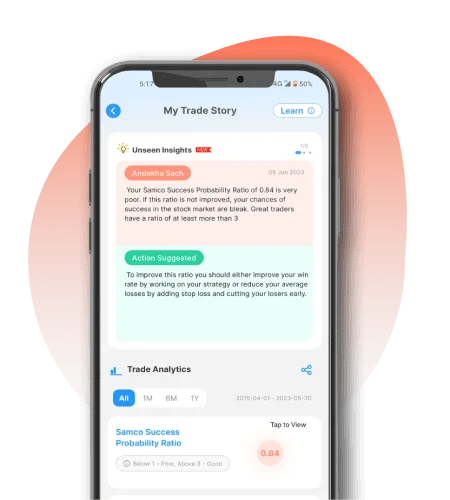Introduction
The cost of carry is a fundamental concept in the world of derivatives, particularly in futures and options trading. It represents the total cost incurred to hold a position in a derivative contract until its expiration. This cost plays a crucial role in determining the price of futures contracts and helps traders and investors make informed decisions. Understanding the cost of carry is vital not only for calculating fair value but also for identifying trading opportunities, managing risks, and developing strategic market positions.
In the Indian derivatives market, where instruments such as Nifty Futures, Bank Nifty Futures, and stock futures are actively traded, the cost of carry becomes a critical factor that can influence profit margins. In this article, we will delve into the components of the cost of carry, its calculation, real-world applications, and its implications in different derivative markets.
Understanding Cost of Carry
The cost of carry in derivatives refers to the expenses involved in holding an asset until a future date. It is the net cost associated with buying and holding a position in a futures contract instead of purchasing the underlying asset in the spot market. This includes all relevant costs such as financing charges, storage expenses, insurance premiums, opportunity costs, and dividends.
Let us break down the major components of the cost of carry:
1. Financing Costs: When a trader buys a futures contract instead of the underlying asset, the funds saved are typically invested elsewhere. Conversely, if the asset were purchased outright, capital would be tied up, and the trader would incur an interest expense. This notional interest cost is a key part of the cost of carry.
2. Storage Costs: For commodities like gold, crude oil, or agricultural produce, there is a tangible cost of storing the asset until delivery. These costs can significantly impact the futures price.
3. Insurance: Physical commodities also need insurance to protect against risks such as damage or theft during the holding period. These premiums are factored into the cost of carry.
4. Dividends (for equities): When dealing with equity derivatives, if the underlying stock pays dividends during the life of the futures contract, these expected payouts reduce the cost of carry.
5. Opportunity Costs: This represents the potential returns lost by choosing one investment over another. For instance, if funds used to buy futures could have been invested in fixed deposits or other high-yield instruments, the forgone interest is part of the cost.
Depending on how these components interact, the cost of carry can be positive or negative. A positive cost of carry implies that holding the futures is more expensive than holding the underlying asset, while a negative cost of carry suggests that it is cheaper to hold the futures.
Importance in Derivatives Trading
The cost of carry significantly influences how futures contracts are priced. The theoretical futures price is calculated based on the spot price of the asset and the cost of carry. Any deviation from this fair value provides arbitrage opportunities.
1. Impact on Pricing: Futures prices are derived by adding the cost of carry to the spot price. For example, if a stock is trading at Rs. 1,000 and the cost of carry is Rs. 20, the futures price would be approximately Rs. 1,020.
2. Arbitrage Opportunities: When the actual futures price diverges from the theoretical price, arbitrageurs can step in. If the futures are overpriced, they might sell futures and buy the spot asset. If underpriced, they might buy futures and short the spot. This activity helps keep the market efficient.
3. Strategic Decision-Making: Traders use cost of carry to decide whether to hold futures or the underlying asset. It also aids in choosing the right expiry and timing the entry and exit points.
Calculating Cost of Carry
The basic formula to calculate the cost of carry is:
Cost of Carry = Futures Price – Spot Price
However, this simplistic formula does not account for time and the rate of interest. A more precise version is:
Cost of Carry = (Futures Price - Spot Price) / (Spot Price * Time)
Where:
- Futures Price = Price of the futures contract
- Spot Price = Current market price of the underlying asset
- Time = Time to expiry (in years)
Example:
Let’s say a stock is trading at Rs. 1,000 in the spot market and the futures contract is priced at Rs. 1,020, expiring in one month.
Time to expiry = 1/12 year
Cost of Carry = (1,020 - 1,000) / (1,000 * 1/12) = 20 / 83.33 ≈ 0.24 or 24%
This implies an annualized cost of carry of 24%, indicating the premium paid for holding the futures position.
Factors Affecting Cost of Carry
Several variables influence the cost of carry. Understanding these factors can help traders anticipate changes in futures pricing:
1. Interest Rates: In the Indian market, the RBI’s repo rate affects the borrowing cost. Higher interest rates increase the cost of financing, thereby raising the cost of carry.
2. Storage and Insurance Costs: Especially relevant in commodities, these costs are borne by holders of the physical goods and passed on in the futures price.
3. Dividend Yield: Stocks that pay high dividends typically have a lower cost of carry, as the expected dividend income offsets part of the financing cost.
4. Convenience Yield: This is the non-monetary benefit of holding the physical asset. For instance, owning gold physically might provide security during economic uncertainty. This yield can reduce the net cost of carry.
Applications in Trading Strategies
1. Arbitrage: Traders often use discrepancies between the actual and theoretical futures price to generate risk-free profits. This process equalizes prices and maintains market efficiency.
2. Hedging: Cost of carry is crucial in deciding the cost-effectiveness of using futures to hedge an underlying position. A high cost of carry might make hedging expensive.
3. Long and Short Positions: Traders gauge whether to go long or short in the futures market based on cost of carry trends. A rising cost of carry might suggest bullish sentiment as traders are willing to pay a premium.
Cost of Carry in Different Markets
1. Equity Derivatives: Here, cost of carry includes financing cost minus expected dividends. Stocks with higher dividend yields tend to have lower cost of carry.
2. Commodity Derivatives: Storage, insurance, and transport costs dominate. In India, commodity futures like gold, silver, and crude oil show variable cost of carry depending on economic and seasonal factors.
3. Currency Derivatives: Interest rate differentials between countries determine the cost of carry. For instance, if Indian interest rates are higher than the US, INR futures would reflect a positive cost of carry.
Common Misconceptions
1. Only Interest Rates Matter: Many assume that cost of carry is solely driven by interest rates. In reality, it includes several components like storage, insurance, and dividends.
2. Cost of Carry is Always Positive: Not true. For high-dividend stocks or assets with negative storage costs, the cost of carry can turn negative, meaning the futures may trade below the spot.
Conclusion
The cost of carry is an essential concept in derivatives trading that affects pricing, strategy, and risk management. By understanding its components and calculation, traders can better interpret market signals, spot arbitrage opportunities, and construct effective hedging strategies. Whether you’re trading equity, commodity, or currency futures in India, factoring in the cost of carry can lead to more informed and profitable decisions.
As derivatives markets continue to evolve and attract increased participation, mastering the dynamics of cost of carry will remain a key differentiator for successful traders and investors alike.








 Easy & quick
Easy & quick